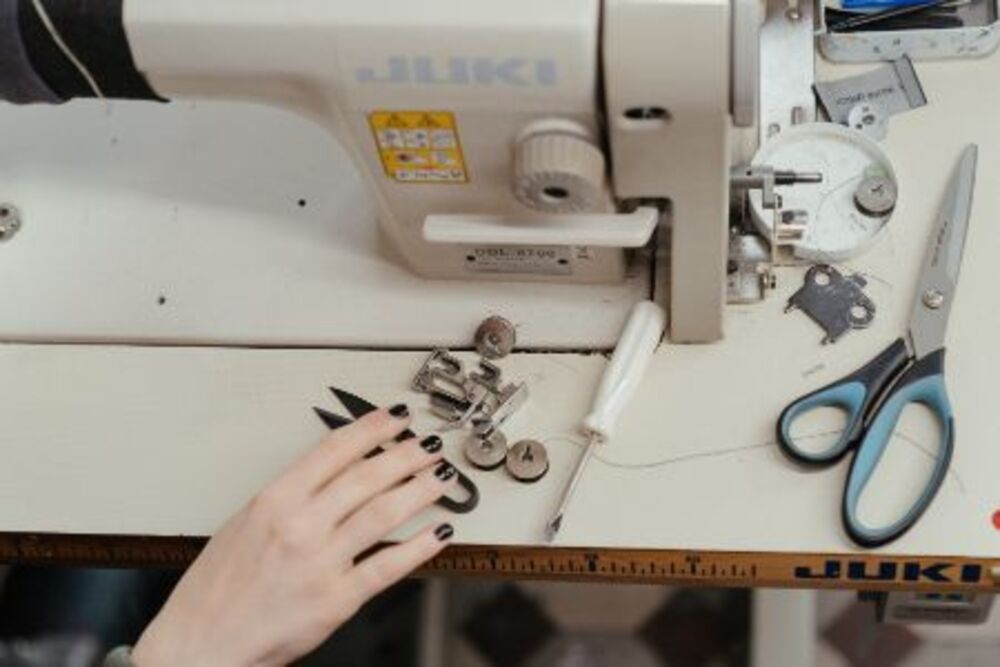Understanding how your machine operates and the basic parts that remain the same is key to using and sewing with it more easily.
This component houses the bobbin with thread. A sewing machine creates stitches by interweaving both threads from its spool with those in its bobbin, leading to stitches being created from sewing.
Thread Guide
Thread guides are components on machines where upper and bobbin threads converge, often made up of screws or hooks to help direct thread in its proper path.
The first needle bar thread guide 26a features an introducing portion 26e for inserting needle thread 10 and an extended leftward threading portion 96.
Tension Regulator
If you have used different thread than what came with your machine or your stitches are uneven, or if there are adjustments necessary for an adjustment in tension regulator. This screw or knob controls how much pressure exerted on upper thread by springs or bobbin cases and therefore exerted onto upper thread. Know the best sewing and embroidery machine.
An adjustable tension regulator designed to fit within a run of control cable with both ends secured to it by spring compensators is incorporated in a lock-stitch sewing machine.
Thread Take-Up Lever
The take-up lever, located above the pressure foot, helps to retrieve thread from fabric after stitching is complete, avoiding knotted wads forming.
Though thread 6 doesn’t break, it can sometimes cling to the take-up lever 9. This problem becomes particularly troublesome when working with fluffy or hard-twist thread. Therefore, an effective solution must be found.
Feed Dog
Feed dogs move the fabric for you, ensuring stitches are straight and even. If your feed dogs won’t move up on their own, consult the user manual of your sewing machine or consult a technician.
Lint build-up can prevent the feed dogs from securely gripping and moving fabric. Therefore, regularly clean under your needle plate in order to prevent such blockages.
Thread Spool Cap
Thread spool caps fit over the ends of thread spools to protect them from coming loose and becoming tangled up in machinery, thereby helping avoid lost stitches or fabric quality issues. They also prevent overstuffing of machines which can result in skipped stitches or fabric quality issues.
Spool caps can be found both online and at fabric and sewing supply stores; some models even cater specifically for your brand of sewing machine.
Bobbin Holder
Your sewing machine requires a specific type and size of bobbin. Failure to comply could result in thread nesting or even cause it to get caught in its case and break off!
To change a bobbin, switch off your machine and raise the presser foot lever before sliding open your bobbin case. We carry most commonly available cases as well as specialty ones that may not be easily found; our light gray case can even be used for embroidery!
Pressure Foot
If your fabric puckers, breaks or doesn’t feed correctly you may need to adjust its pressure foot. This is typically accomplished by turning a regulator such as a pin that pops up, dial or knob; tightening towards plus sign will tighten it; loosening towards negative sign will loosen it.
Specialty sewing machine feet allow you to achieve unique effects and discover innovative techniques! They make crafting custom sewing projects possible!
Needle Plate
The needle plate (commonly referred to as throat plate) lies beneath your sewing machine’s needle and presser foot, providing openings for its needle to pass through as it stitches fabric.
Some plates feature needle holes with limited sizes in order to prevent fabric from getting caught in your machine and being pulled under when working with lightweight fabrics or side-to-side stitches. This feature can come in handy when working with light fabrics or side-to-side stitches.
Faceplate Thumb Screw
Thumb screws feature a knurled head to facilitate manual tightening or loosening and are installed into predrilled or tapped holes.
Finding a screw size suitable to the faceplate recessed head is crucial.
This screw is used to fasten the foot holder securely to the faceplate and make attaching feet simpler. Additionally, it works for access ports on columns.
Throat Plate
A throat plate is the metal plate located below your needle and presser foot on your sewing machine, secured in place with one or more screws and featuring holes or slots to accommodate different needle positions and fancy stitches on your machine.
Call Heirloom Creations with your machine model number to order a straight stitch throat plate!

